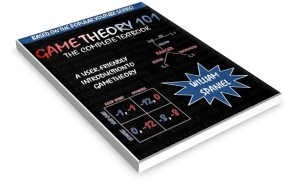Powerball is rolling over once again, with organizers projecting a $1.3 billion jackpot on Wednesday. I have read lots of articles discussing some of the pure statistics of the game—the return on investment of each ticket, the likelihood that no one wins—but not so much on the interesting strategic facets of the game. That is what this post is about.
Unfortunately, we cannot discuss strategy without briefly talking about money. So let’s start there.
The Jackpot Is Huge—So Powerball Is Profitable, Right?
Not quite. Showing that it isn’t requires a lot of math, so I have saved that for a separate post. But the summary is as follows. Based on the lump-sum prize, lottery officials are expecting to sell ~413 million tickets for Wednesday’s draw. (Sambla believes that this is probably a gross underestimation; we will get to that in a moment.) Taking that at face value, suppose you had the bankroll to purchase all 292 million or so combinations. The binomial distribution can generate a good estimate to know how many people you have to share your winnings with, which winds up at roughly $525 million. Factor in an additional $93 million in consolation prizes, and your expected haul is $618.6 million. With the cost of tickets only $584 million, it would appear you have a $34 million profit…
…until taxes come. While the IRS allows you to deduct gambling losses—here, a nontrivial $584 million—you still must pay approximately $47 million in taxes. Thus, your scheme operates at a slight loss.
What would happen if the prize were significantly higher, perhaps because no winner emerges on Wednesday? Well, even factoring in an anticipated spike in regular purchases, history suggests all the profits will quickly disappear. Beginning in 2005, multiple groups realized that Massachusetts’ Cash Winfall lottery provided profitable draws on a semi-regular basis. (The full story from daftar sbobet is long but fascinating.) Yet each of these groups began pouring more money into the scheme, driving down the profitability for everyone. In essence, economic theory prevailed—the “free money” quickly disappeared.

Massachusetts: Home of Beatable Lotteries
Cash Winfall was also unique in that it did not require buying every single number combination to exploit without opening an investor up to massive risk. This was an issue that an Australian group encountered in 1992 when they tried to purchase all seven million combinations of numbers in the Virginia lottery. They only managed to buy five million tickets before time ran out. Note that this is just 1.7% of the lottery tickets that you would have to buy to cover Powerball.
Thus, even if Powerball were to rollover one more time, we would likely experience a similar phenomenon. Only groups that had mastered the logistics could hope to exploit the system. Those that did would keep Powerball virtually unprofitable, though it will be less unprofitable than under regular circumstances. Thus, players who would not otherwise tolerate the risk will buy tickets—if they have the time to endure long lines.
Coordination Problems
You cannot change the probability that you win the jackpot, but you can raise your expected payoff by picking numbers that others will not choose.
To illustrate this, think of a simple $1 million lottery with just two number combinations and two players who can each purchase one ticket. Any ticket you buy has a 50% chance of winning the jackpot. If you buy the combination the other player does not, you have a 50% chance at $1 million. But if you purchase the same combination, you have a 50% chance at just $500,000. You have cut your expected value in half.
In practical terms, this suggests that you should avoid picking numbers 1-31. Many players like to choose combinations that contain their birthdays, which leaves those numbers over-selected.
(Of course, if all lottery players read this and followed my advice, then suddenly numbers 1-31 look attractive. Behold the complications of strategic interaction!)
Perhaps you knew about the birthday trap. But did you know to steer clear of fortune cookies as well? Apparently, some fortune writers duplicate their suggested lottery picks ad nauseam. Once, the fortune cookie got it mostly right, matching five numbers but not the Powerball. An astonishing 110 people won the second prize of $100,000, with some garnering an additional $400,000 for buying a more expensive ticket.
While second prize pays a fixed amount, it would have been a disaster had hit the Powerball number as well: each person’s lump sum payoff would have only been $122,727. That’s less than those fancy expensive tickets would have paid for second prize!

It’s a trap!
Forecasting Jackpot Amounts
Lottery officials face a difficult challenge in forecasting the jackpot for Wednesday’s drawing. Under normal circumstances, forecasting is easy—they have plenty of data on regularly-sized jackpots, so they can use the historical record to make clean estimates. The $1.3 billion lottery is unprecedented, though, and it is really difficult to predict way beyond the data you have.
Obviously, for the sake of credibility and paying for everything, Powerball would not want to advertise a jackpot it will not actually reach. But Powerball officials are playing more subtle game. Their incentives are to have as many tickets sold as humanly possible. One way they can push for more sales is through advertisements. And this is why it behooves them to deliberately underestimate the jackpot. As the drawing gets closer, lottery officials can update the jackpot with progressively higher numbers. They then send out press releases, and news organizations are all too happy to put the update into the cycle once again.
In other words, deliberate underestimation is a crafty media ploy.
And that’s some of the game theory behind the record lottery.






